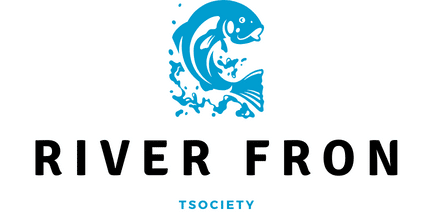Does the Incorporation of Edible Landscaping in Urban Areas Support Public Nutritional Health?

In the dynamic realm of urban development, the concept of edible landscaping has emerged as a revolutionary strategy to intertwine food production into the community’s daily life. Edible landscaping is a sustainable design approach that combines beauty and utility by incorporating food-producing plants into urban landscapes. By transforming cityscapes into fertile grounds for agricultural cultivation, this innovative approach can potentially support public nutritional health. Through this, we’ll delve into different aspects of edible landscapes, its implications for urban food production, and its potential impact on public health.
The Growing Trend of Edible Landscaping
Edible landscapes are a refreshing addition to the urban fabric, combining the aesthetic appeal of traditional landscaping with the functional benefits of local food production. They represent a shift from ornamental horticulture towards a more sustainable and efficient use of urban spaces.
Have you seen this : How Can Virtual Reality Simulations in Driver’s Education Improve Road Safety Awareness?
Edible landscapes are not just about the production of food, but also about its integration into the urban fabric. They combine elements of agricultural design and gardening, creating a visually appealing, productive garden that can be incorporated into any urban setting. The concept is flexible, allowing for a diverse array of crops, from fruit trees and vegetable plots to herb gardens and medicinal plants.
In the face of rapid urbanization and dwindling green spaces, this approach bolsters the idea of resilient cities that are not just economically and socially sustainable but ecologically responsible as well.
Also to discover : What Are the Best Mobility Exercises for People with Multiple Sclerosis During Flare-Ups?
Edible Landscapes and Community Development
Edible landscapes contribute significantly to community development. They foster social interactions, create a sense of belonging, and encourage active participation in food production.
A community-based edible landscape provides a shared space for residents to interact, collaborate, and learn from each other. It encourages the community to engage in agricultural practices, enhancing their understanding of food production and promoting healthier dietary habits. Moreover, these landscapes can serve as educational tools, particularly for children, instilling in them an appreciation for nature and the food cycle.
Additionally, edible landscapes can also contribute to the community’s economic development. By growing and selling their produce, residents can supplement their income and improve their financial stability. This can also stimulate local economies, reduce food transportation costs, and promote local businesses.
The Potential of Edible Landscapes in Urban Agriculture
Edible landscaping is an innovative approach that can potentially redefine urban agriculture. By weaving agricultural practices into the urban fabric, it enables cities to become self-sufficient in food production, thus, enhancing food security.
In urban settings, space is a significant constraint for agriculture. However, edible landscapes can overcome this by utilizing every available inch of land, be it public parks, rooftops, vertical walls, or even road medians. These landscapes can significantly increase local food production and provide fresh, organically grown produce right at the doorstep of urban dwellers.
Furthermore, incorporating edible landscapes into urban design can also contribute to the sustainable management of resources. For instance, urban farming can reduce waste by using compost made from organic waste to improve soil fertility. It can also lessen the city’s carbon footprint by reducing the need for transporting food from rural areas to cities.
Impact on Public Nutritional Health
Edible landscapes can play a pivotal role in improving public nutritional health. They provide easy access to fresh, nutritious food, thereby encouraging healthier eating habits.
With the increasing prevalence of processed food in urban diets, there is a growing concern over the nutritional health of urban dwellers. However, edible landscapes can help address this issue by making healthy, fresh produce readily available. The act of gardening itself can also promote a healthier lifestyle by providing physical exercise and reducing stress.
Moreover, edible landscapes can also help ensure food security, especially in neighborhoods with limited access to fresh produce. By empowering communities to grow their own food, these landscapes can help mitigate the effects of food deserts and ensure that everyone has access to nutritious food.
The notion of edible landscapes is more than just a sustainable design strategy; it is a holistic approach that aims to reshape our urban environments and lifestyles. While it’s too early to conclusively state that the incorporation of edible landscaping in urban areas supports public nutritional health, the potential benefits are promising. The integration of food production into the urban fabric can lead to healthier communities, both physically and economically. With continued research and implementation, edible landscapes can truly revolutionize our urban environments.
Role of Edible Landscapes in Mitigating Climate Change
Edible landscapes can play a considerable role in mitigating the impacts of climate change by enhancing biodiversity, improving air quality, and reducing urban heat island effects.
Increased biodiversity is a significant advantage of edible landscapes. By incorporating a variety of food-producing plants, these landscapes can attract an array of insects, birds, and other wildlife, promoting a rich ecosystem within urban areas. This biodiversity is critical to maintaining ecological balance, and it can help mitigate the impacts of climate change.
Besides promoting biodiversity, edible landscapes can also improve air quality. Plants absorb carbon dioxide and release oxygen, thereby reducing greenhouse gas emissions. Furthermore, they also filter out harmful pollutants, providing cleaner air for urban dwellers.
Another crucial aspect is the reduction of urban heat islands, which are significantly warmer urban areas compared to their rural surroundings due to human activities. Edible landscapes, with their green foliage, can help to cool down urban areas and mitigate the urban heat island effect.
In a nutshell, the role of edible landscapes in climate change mitigation is evident, and their incorporation into urban planning is a proactive measure towards sustainable development.
Conclusion: The Promise of Edible Landscaping for Urban Areas
The concept of edible landscapes in urban areas offers a promising solution to several pressing concerns of our time – food security, public health, and climate change. Above all, it is a practical and aesthetically pleasing way to integrate sustainable food systems into our daily lives.
By integrating food production into urban landscapes, edible landscaping can help to ensure food security, reducing our reliance on long and vulnerable supply chains. Furthermore, by providing access to fresh fruits, vegetables, and herbs, it can also promote healthier dietary habits among urban residents.
Moreover, edible landscapes can play a significant role in community development. They provide a shared space where community members can engage in productive activities, learn about food production, and foster a sense of community.
In terms of climate change mitigation, edible landscapes can enhance biodiversity, improve air quality, and reduce urban heat island effects. As cities continue to grow, these benefits make edible landscapes an essential element in urban planning and design.
While there are challenges to be overcome, such as space constraints and public awareness, the potential benefits of edible landscapes are immense. The integration of agricultural landscapes into our urban areas is more than just a trend; it is an essential step towards a sustainable and resilient future.
As more communities embrace this innovative approach, the role of edible landscapes in our urban areas will only continue to grow. The future of urban agriculture lies in edible landscaping, and its potential for improving public health, fostering community development, and mitigating climate change is substantial. With careful planning and implementation, edible landscapes can truly revolutionize urban living, making our cities greener, healthier, and more sustainable.
